Thursday Feb. 09, 2006
Distribution of the Expt. 2
materials began today.
Collect your
data as soon as you can, return the materials, and pick up the
supplementary information sheet. Reports are due on Tuesday, Feb.
28
The Quiz #1 Study Guide is now available
online. The quiz is on Thursday next week. Remember Quiz
#1 will cover material on the Practice Quiz
Study Guide also.
We are in
the process of learning about surface weather maps and what they tell
you about the weather. We covered surface centers of LOW and HIGH
pressure in class on Tuesday.
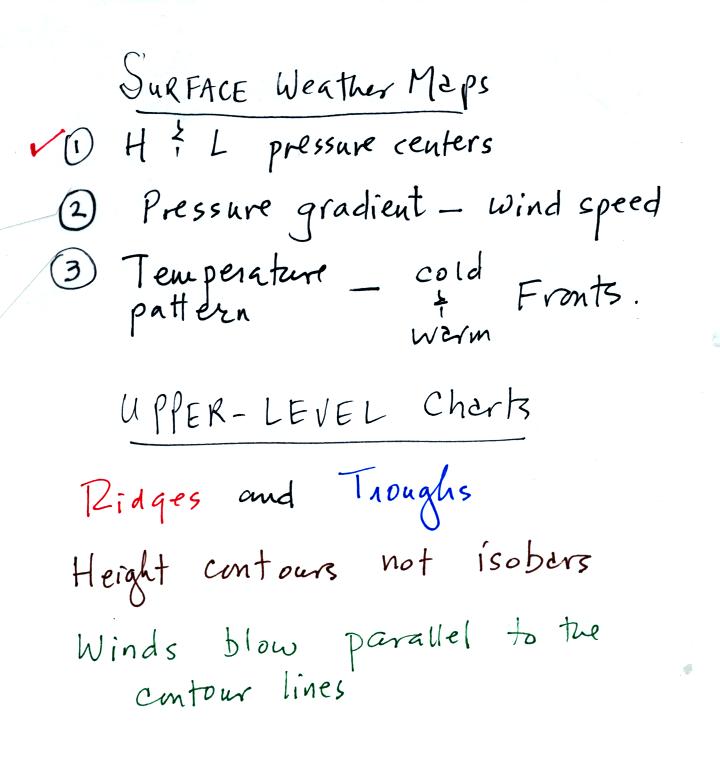
Today we'll look at what the contour pattern on a map,
specifically the isobar spacing, tells you about wind speeds. The
pressure pattern and the winds that it produces can have an effect on
the temperature patterns. Warm and cold fronts can form at the
boundaries between air masses with different temperatures and are an
additional way of causing rising air motions in the atmosphere.
Finally we'll look at how atmospheric conditions above the ground are
depicted on upper level charts and at some of the features found on
these charts.
2. Strong and weak pressure gradients and wind speed
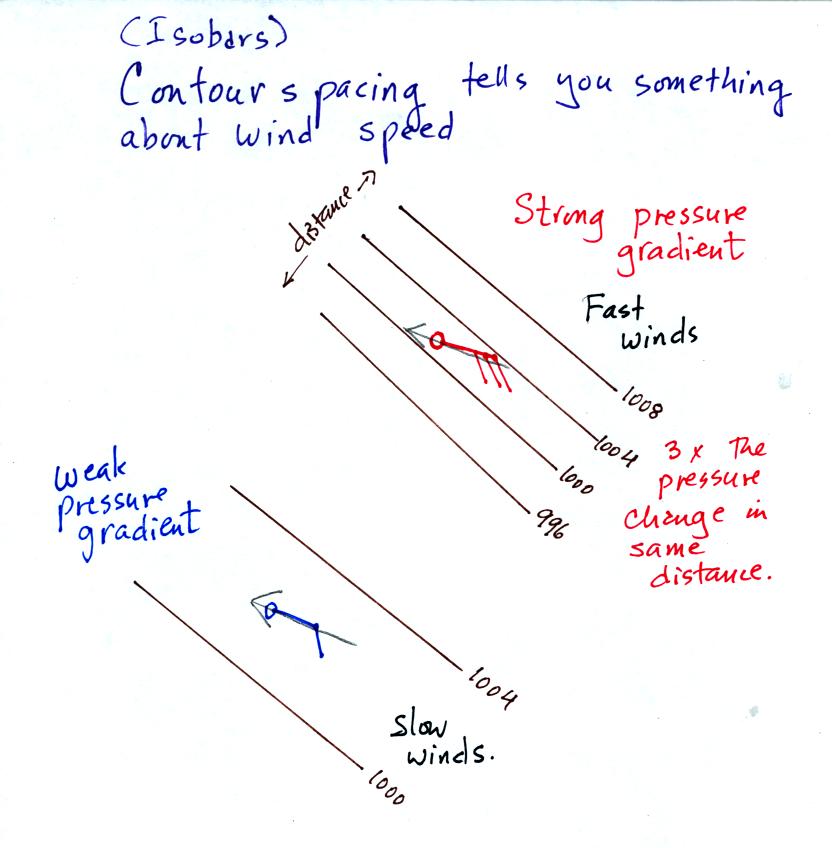
Closely spaced isobars indicate the pressure is
changing rapidly with distance. This is called a strong pressure
gradient. Conversely, widely spaced isobars mean a weak pressure
gradient and slower winds.
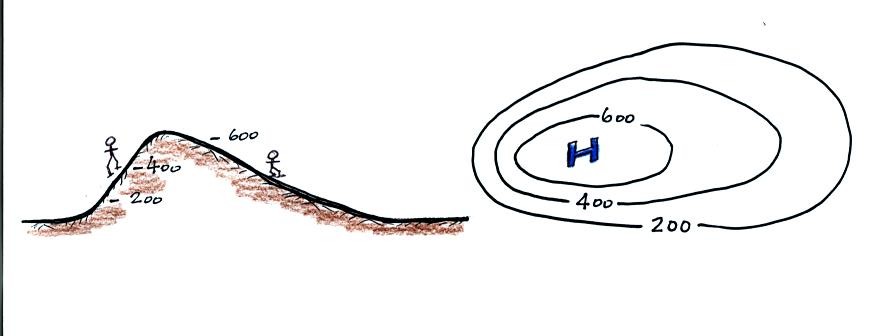
In some respects weather maps are like topographic
maps. The map
above at right represents the hill at left. Closely spaced
contours on the topographic map correspond to a steep slope on the
hill. Widely spaced contours depict the gradual slope on the
right side of the hill. If you were to trip and roll downhill,
you would roll faster on the steep slope than on the gradual
slope.
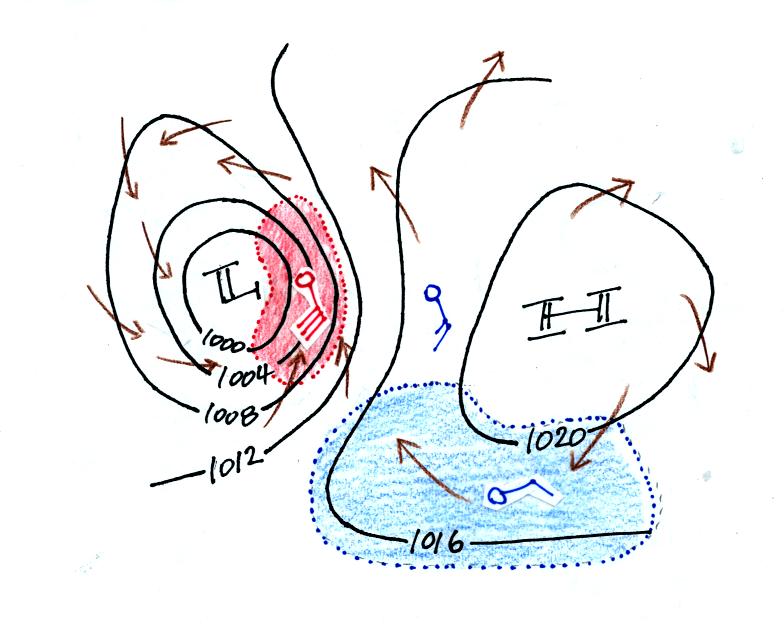
Here's a more complex weather map example. The brown
arrows
indicate the directions of the winds (clockwise and outward around the
high, counterclockwise and inward around the low). Fast 30 knot
winds are found in the strong pressure gradient region shaded
red. Slower 10 knot and 15 knot winds are shown in the blue weak
pressure gradient region.
3. Temperature patterns, cold and warm fronts
The pictures
below are somewhat
different from and are hopefully a little clearer than those shown in
class.
Winds can affect the surface temperature pattern. The following
picture shows a band of cold air in the north and a band of warm air in
the southern part of the map. This is the kind of temperature
pattern you might expect to see if the wind wasn't blowing (boundaries
between air masses of different temperatures would lie parallel to the
lines of latitude.
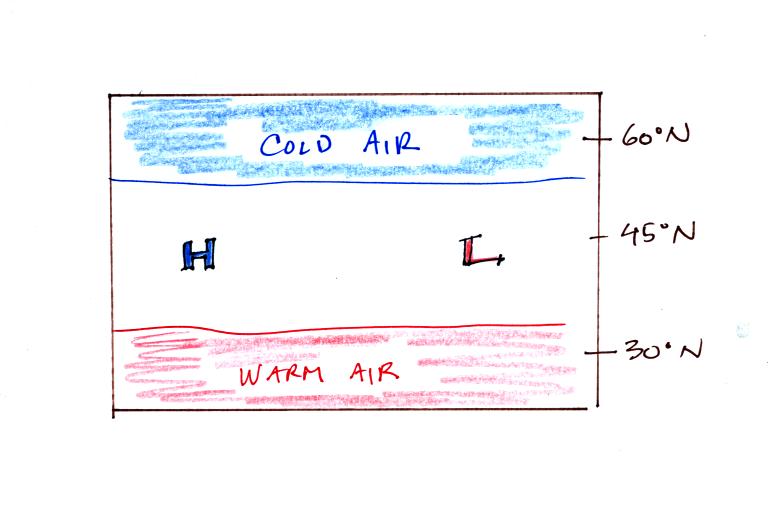
Now we will add the winds spinning around the H and L
pressure centers
in the middle of the picture. First the H pressure:
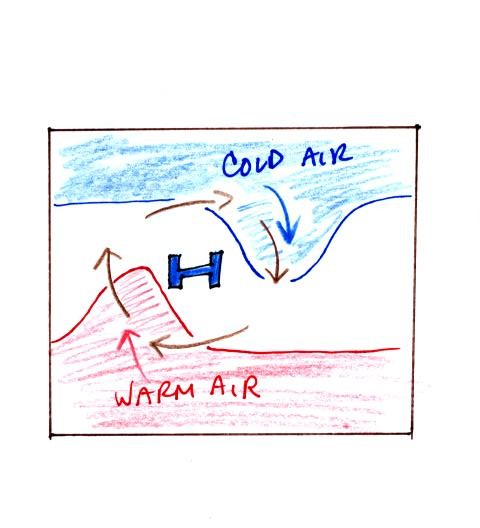
The clockwise spinning winds move warm air to the north of
the western
side of the HIGH. Cold air moves toward the south on the eastern
side of the high.
In the case of LOW pressure:
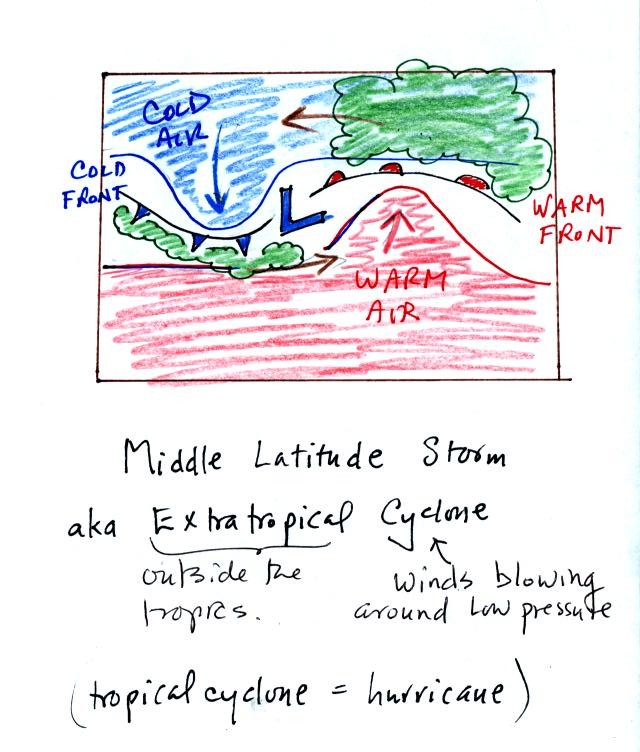
The temperature pattern is the opposite, cold
air moves southward
on the western side of the low and warm air moves northward on the
eastern side of the low.
Surface winds converge in toward the center of low pressure.
Sharp boundaries form beween the air masses with different temperatures
as they are brought into contact with each other. A cold front is
low ahead of the advancing mass of cold air on the left side of the
picture. Note the points on the frontal boundary that identify it
as a cold front and show its direction of motion. A warm front is
shown on the eastern side of the LOW and is identified with half
circles).
A low pressure center with fronts is a type of large scale storm system
called a middle latitude storm or an extratropical cyclone.
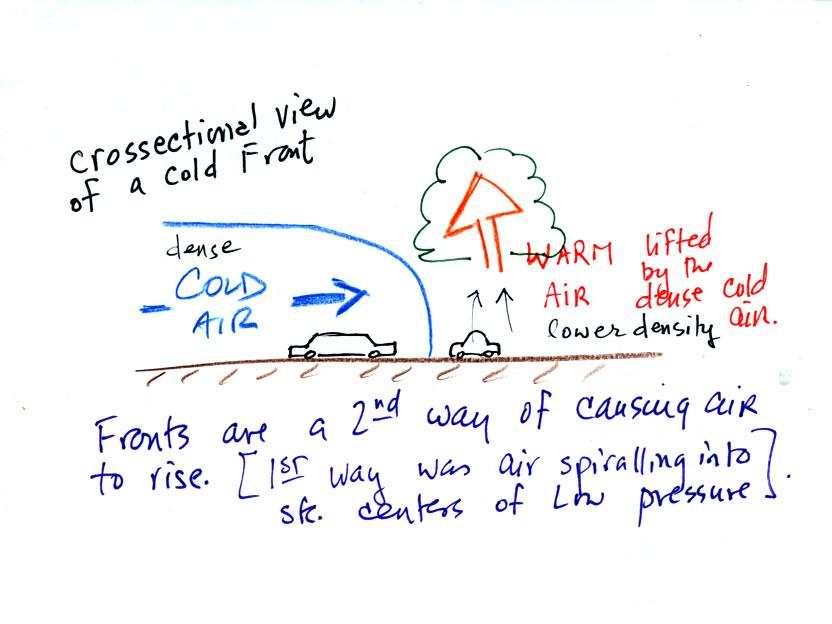
Cold dense air on the left is advancing into warmer lower
density air
on the right. The warm low density air is lifted out of the way
by the cold air. Fronts are another way of causing rising air
motions in the atmosphere. Rising air cools and if the warm air
is moist, clouds and precipitation can form
Here's what a warm front looks like:
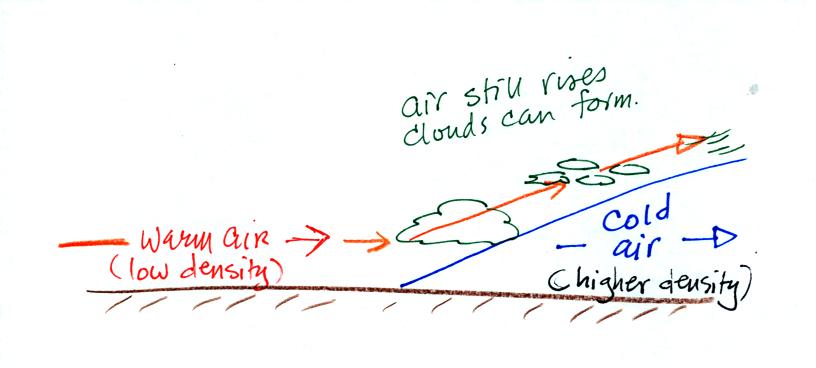
Warm air is advancing into colder air. The warm air is
less dense
than the cold air and can't lift the cold air out of the way.
Rather the warm air overrides the cold air. Air is still rising
and cooling, so clouds and precipitation can still form. Clouds
often spread out over a large area ahead of a warm front than ahead of
a cold front.
If you refer back to the map view of the middle latitude storm you will
see clouds drawn in ahead of the cold and warm fronts.
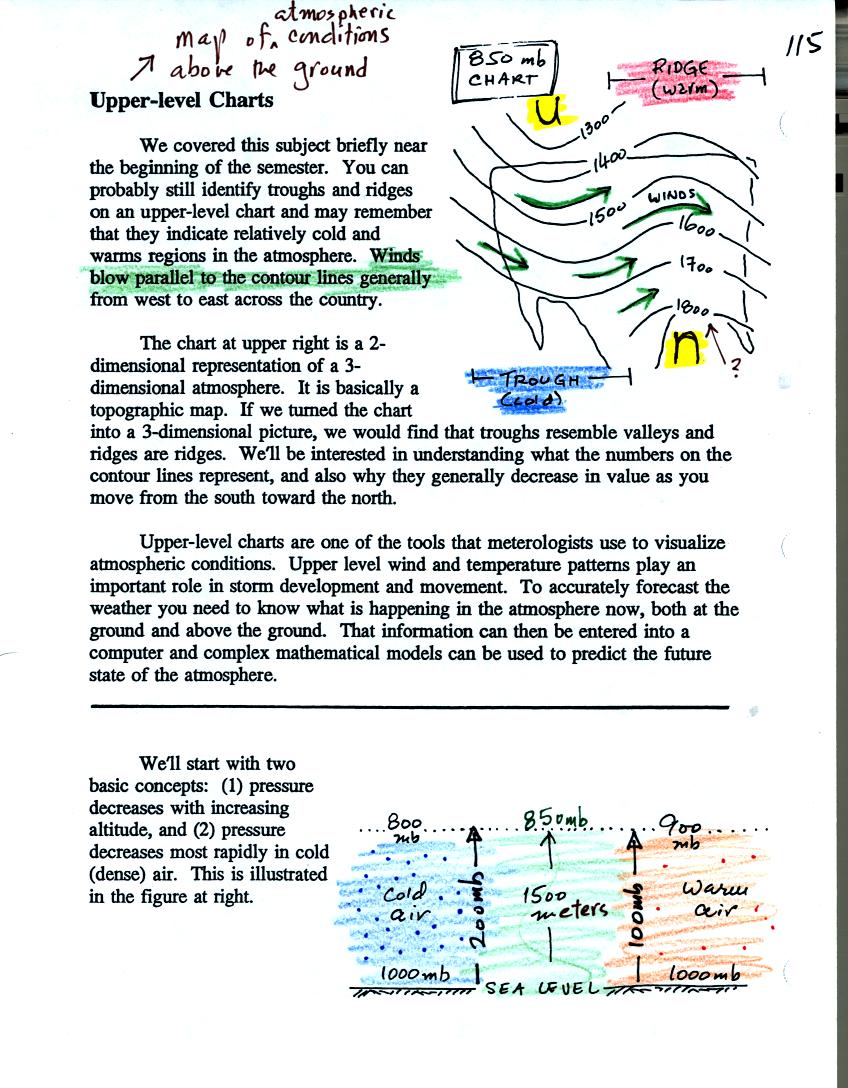
Now we'll take a look at upper level charts, charts
that depict atmospheric conditions above the ground. Before you
go any further you need to remember that
pressure decreases with increasing altitude in the atmosphere (pressure
at any level is determined by the weight of the air overhead, as you
move upward there is less and less air left overhead and pressure
decreases). Also, the rate of pressure decrease depends on the
air's density (if you move upward through dense air you are quickly
moving weight from overhead and putting it underneath you; this causes
a rapid rate of pressure decrease).
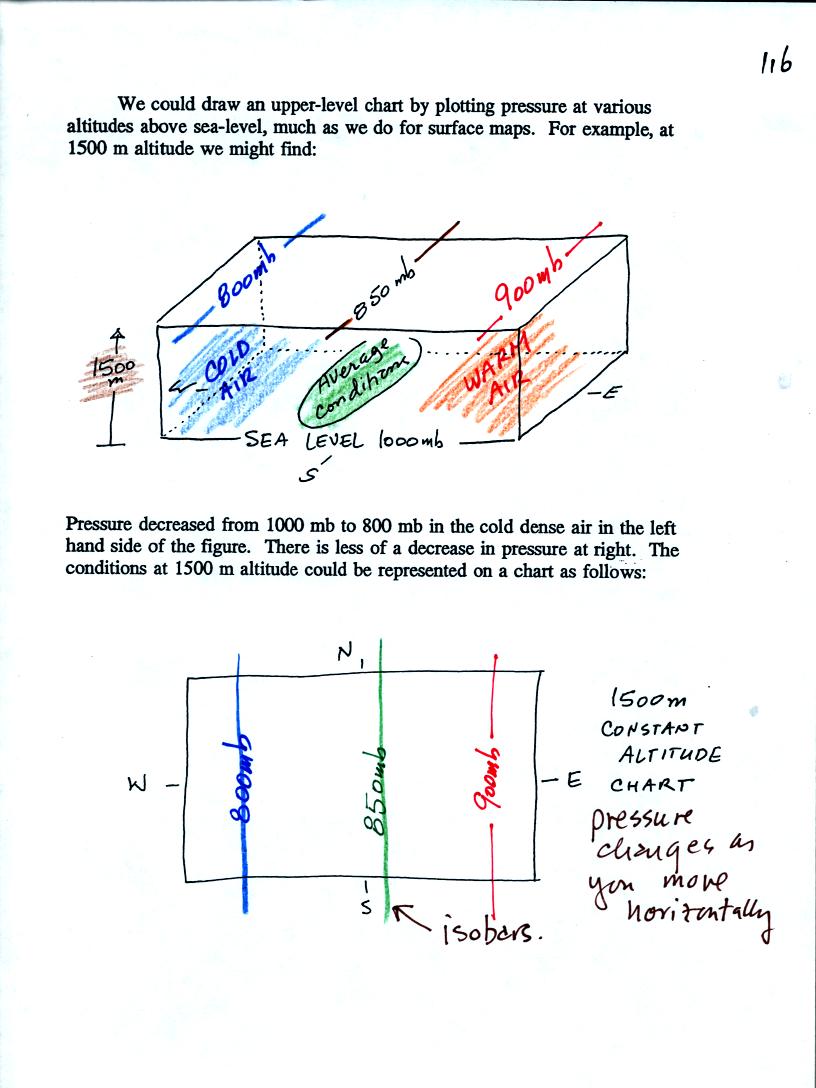
One way of depicting upper level conditions would be
to measure
pressure values at some fixed altitude above the ground. The
pressure pattern could then be plotted on a constant altitude chart
using isobars. Note the lowest pressures would be found in the
cold air, higher pressures would be found in the warm air.
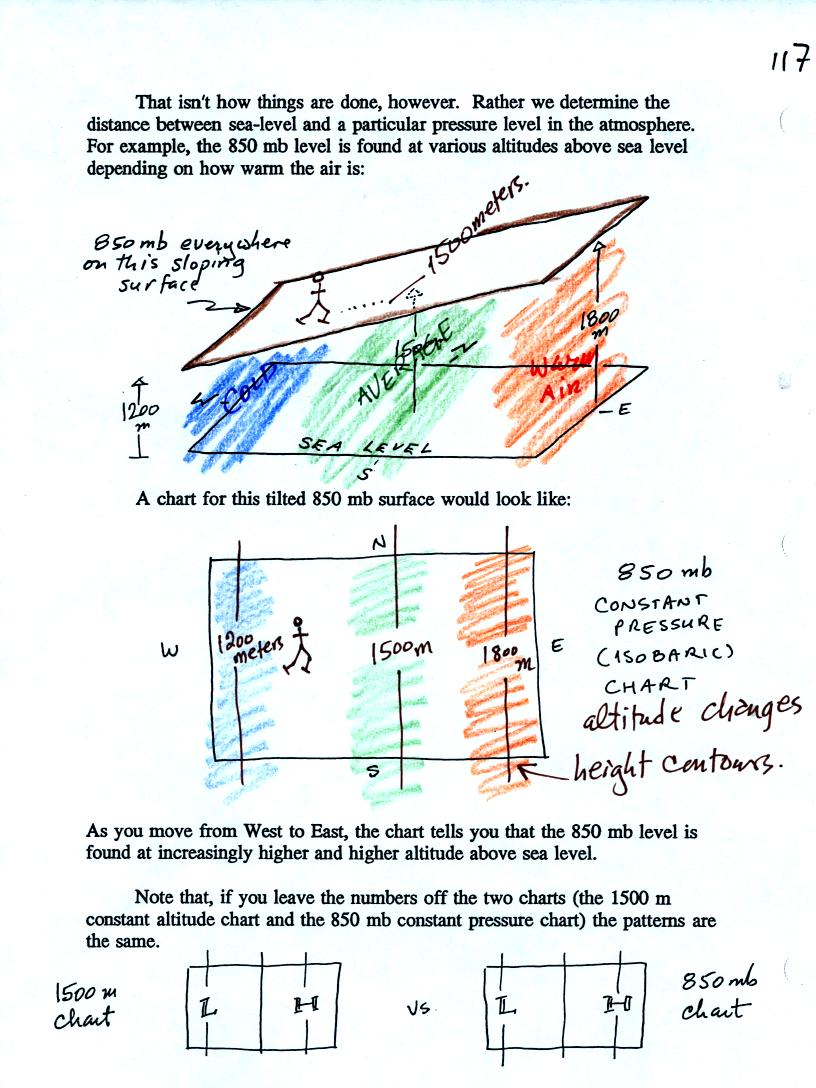
Rather than plotting conditions at a constant altitude
above the
ground, meterologists measure and plot conditions at a particular
reference pressure level above the ground. Every point on the
sloping surface above has the same pressure, 850 mb. The altitude
above the ground is what is changing. You would find contours of
altitude or height contours plotted on a one of these constant pressure
charts.
Note, at the bottom of the figure above, that the the two kinds of
upper level charts (constant altitude vs constant pressure) have the
same overall pattern.
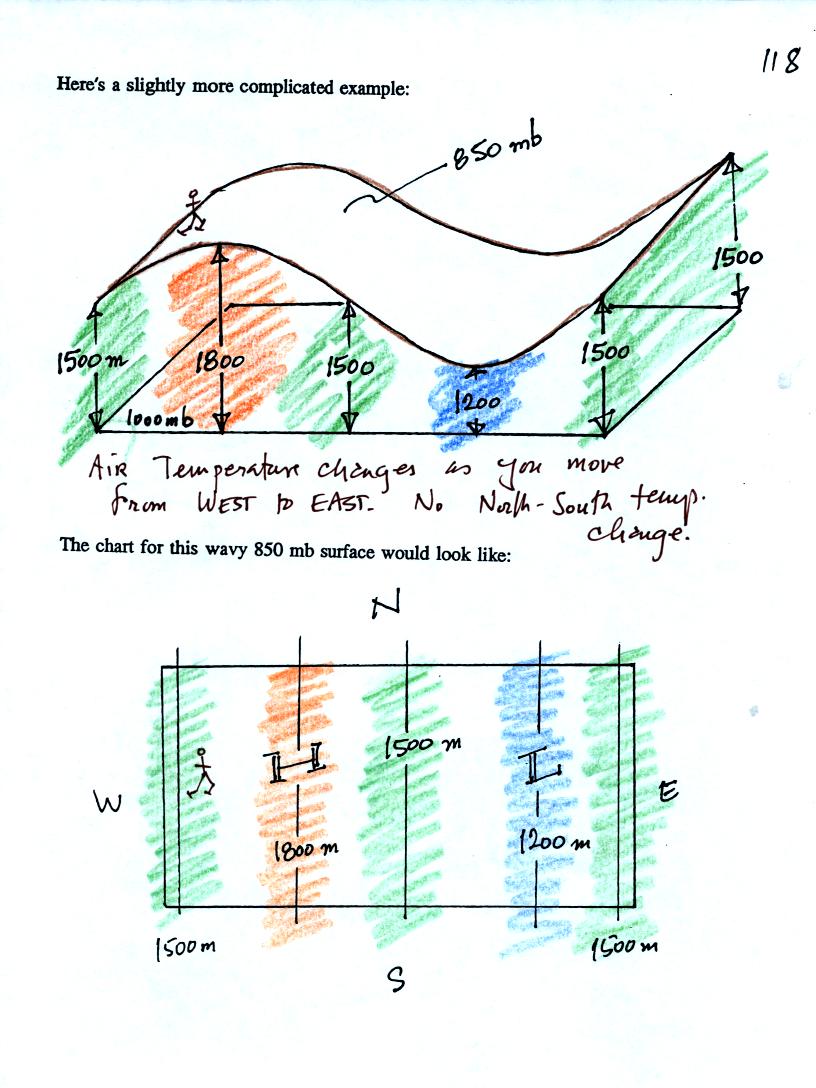
A slightly more complicated example - a wavy surface
instead of a flat
sloping surface.
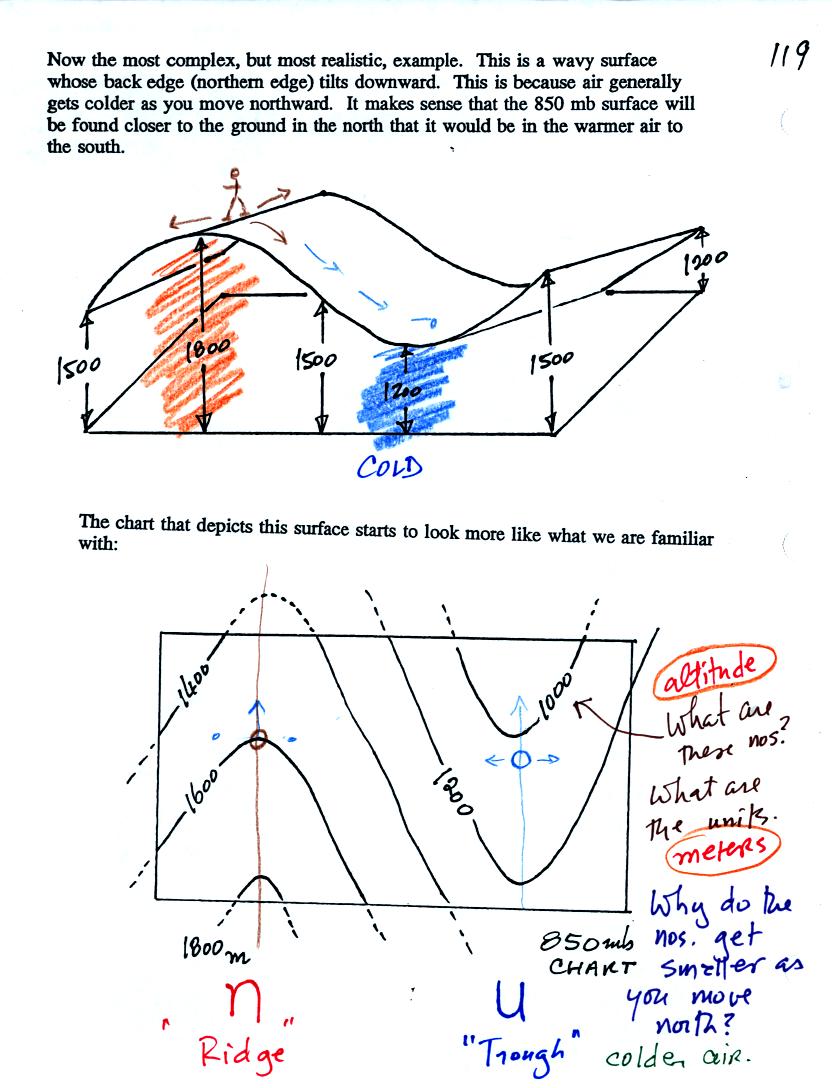
In this last example we have added a south (warm) to
north (cold)
temperature change to the west to east temperature variations that were
in the last example. We end up with a wavy surface that slopes
from front to back (high in the south, closer to the ground in the
north). The "topographic map" that represents this surface is
much different from our earlier examples but resembles more closely
what you would see on a real upper level weather map. Ridge and
trough features are clearly defined. You can now understand why
the ridges are called ridges. They should have called troughs
valleys.
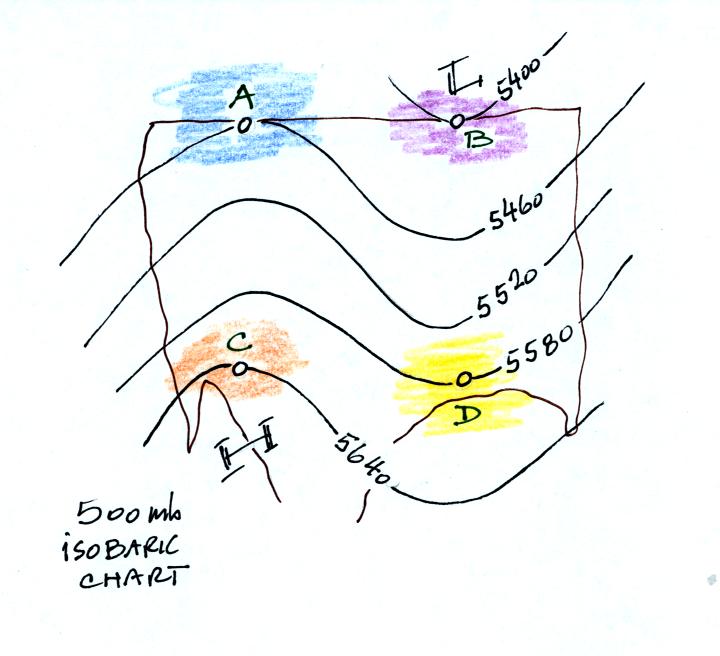
A final example not shown in class that you can
use to check your
understanding of upper level charts. This is a 500 mb constant
pressure chart not an 850 mb chart like shown in the previous
section. The numbers on the contours are altitudes in
meters. The 500 mb pressure level is found at higher altitude
than the 850 mb pressure level.
Pressure at sea level is typically around 1000 mb. You find the
850 mb level at about 1500 meters altitude, the 700 mb level at 3000
meters and the 500 mb level at around 5500 meters altitude.
All four points on the map above have one thing in common: the pressure
at all four points is 500 mb.
Points C and D lie at about the same latitude. Point C is found
at higher altitude (5640 m) than Point D (5580 m). The air below
Point C is warmer than the air below Point D. Similarly the air
below Point A is warmer than the air below Point B.
Points A and C both lie in a ridge. The altitude at Point A (5460
m) is lower than the altitude at Point C (5640 m). The air below
Point A in the north is colder than the air below Point C near the
southern edge of the map. Similarly the air below Point B is
colder than the air below Point D. Both Points B and D lie in a
trough.
Pressure is decreasing most rapidly in the cold dense air below Point
B. Point B is closest to the ground. Pressure is decreasing
most slowly with increasing altitude in the warm low density air below
Point C. Point C is furthest from the ground.














